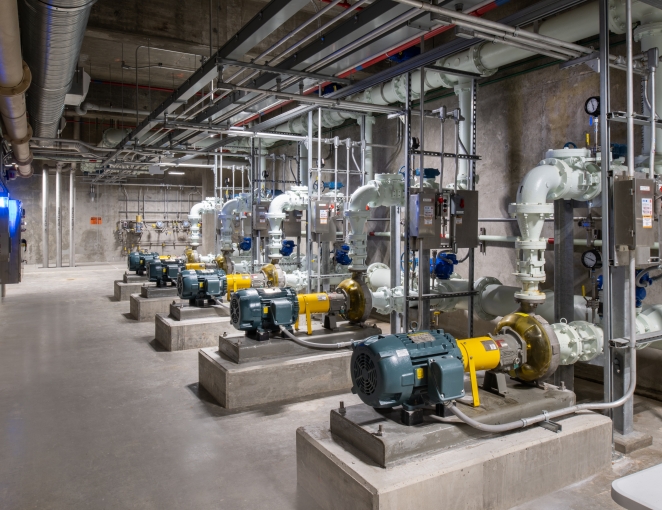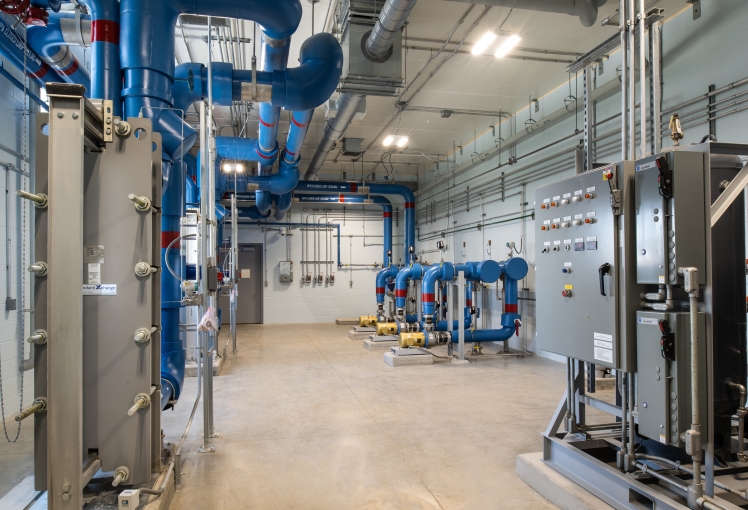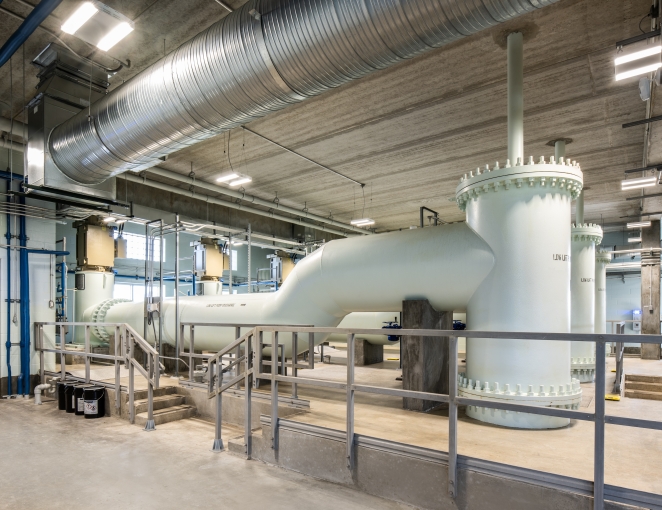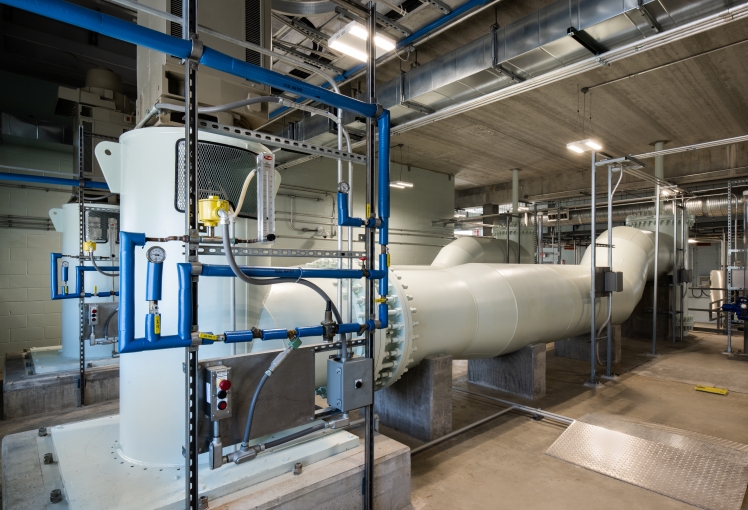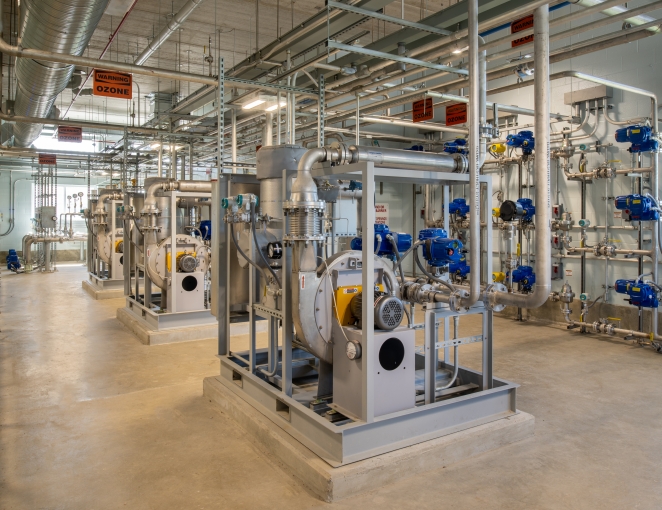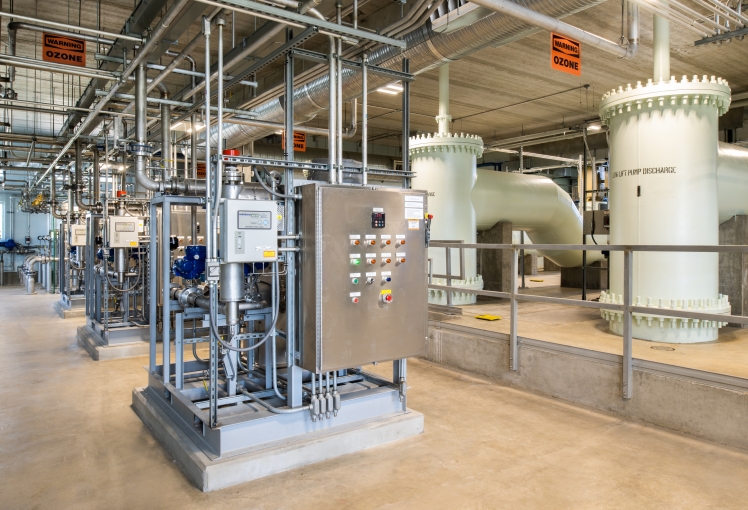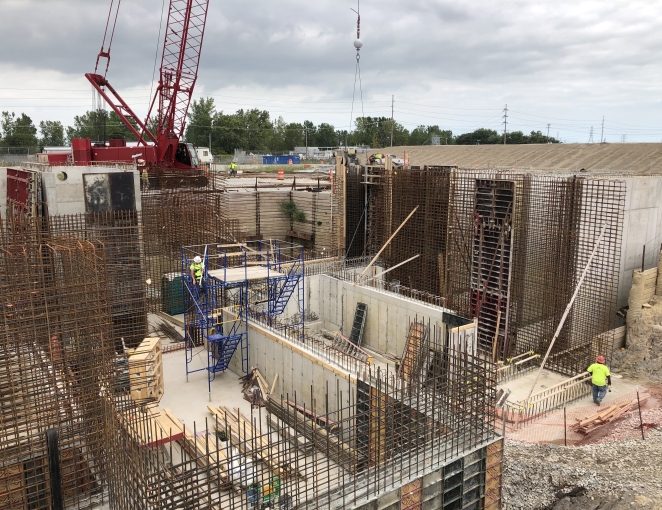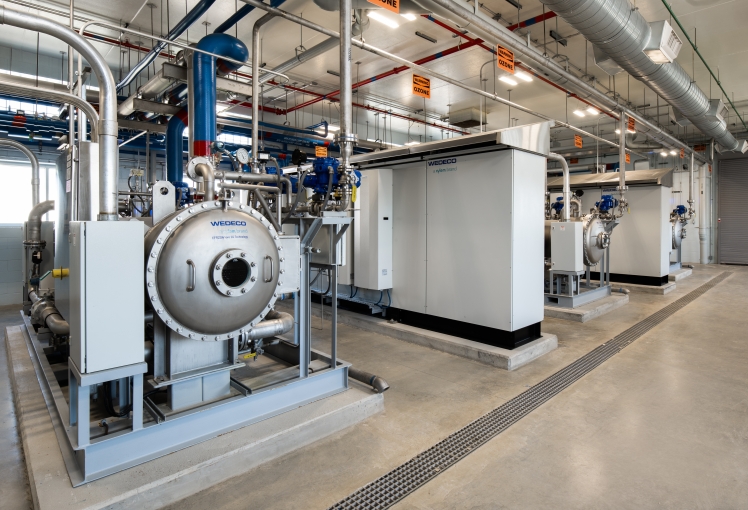
NEW OZONE TREATMENT FACILITY
In 2014, the City of Toledo’s water was declared unsafe to drink for three days due to toxic algal blooms, leaving 500,000+ residents without water and headlining national news. This led to a new, $43M ozone treatment facility at the Collins Park Water Treatment Plant as an advanced treatment for oxidation and removal of algal toxins encountered in the raw water pumped from Lake Erie.
Shook constructed two 11,000-gallon tanks to store liquid oxygen (LOX) and three vaporizers to turn LOX to gaseous oxygen (GOX). The GOX then moves to the Ozone Generation Building, a new slab-on-grade masonry building that includes three 1,200 ppd generators that turn GOX into gaseous ozone. Each of these generators has three corresponding Power Supply Units, and a cooling water system was installed to prevent the generators/PSUs from overheating.
Two identical Ozone Contactor Buildings with a 160 MGD treatment capacity were constructed. These masonry buildings sit on 27-foot-tall concrete walls that are 2-feet, 6-inches thick. Inside, an ozone sidestream injection system introduces ozone to the plant’s water and four contactor basins allow the ozone contact time. Then, two 80 MGD pump stations increase the hydraulic head of the flow before it is reintroduced to the existing treatment system.
Working with volatile ozone added complexities to the project. Finding materials that were ozone-resistant and met AIS / NSF-61 certifications proved difficult and the 2,500+ instruments/valves installed in the piping system required meticulous detail. Furthermore, the project schedule was set at just 22 months and met the complications of a pandemic as well as a shortage of skilled labor in the region. With strict oversight by Shook’s team, we poured 12,000 cubic yards of concrete in 12 months and accomplished the schedule, leading the project to become the most efficient and modernized water treatment plant in the nation.
GENERAL CONTRACTING | $44.8M | 12,000 CY OF CONCRETE
"When we first saw the bid documents, we knew this was going to be one of the most difficult projects that our project team had ever seen. After completing the project, it is clear it was the MOST difficult. However, with the understanding that the City of Toledo needed this project to provide safe drinking water, the team persevered through a difficult schedule, unprecedented labor shortages and a global pandemic to create a new plant process that will ensure the residents of the city never have to agonize about where they will get their next glass of water." - Randy Beck, Project Manager

